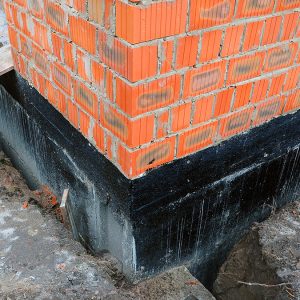How to fix below-grade water damage
Water is a seemingly harmless element that can be disastrous for constructions. Whether you have a small office building or a large-scale factory, your building needs to be properly protected. This starts at the ground level—addressing below-grade water and repairing damage as quickly as possible.

The dangers of below-grade water
When it rains, water quickly absorbs into the ground. This often leads to freestanding water that can collect around a building’s foundation. The outward and downward forces from this water are collectively known as hydrostatic pressure, and that pressure pushes onto all areas of the foundation. Eventually, the pressure causes foundation issues, such as basement leaks, bowed walls, shifting, settling, and other problems.
You can avoid these potentially expensive repairs by waterproofing your building at the foundation.
How to waterproof a building below ground
Waterproofing starts with a good drainage system that can direct unwanted water away from the foundation. This is your building’s first line of defense against hydrostatic pressure because it prevents water from collecting around the foundation. If you notice freestanding water near your building, it may be time to get your drainage systems re-evaluated.
Beyond that, there are interior and exterior waterproofing solutions that can protect your building from water infiltration. We typically recommend exterior applications because they shield the foundation in the outermost areas. Interior waterproofing has a tendency to trap moisture, which only adds to the problem.
For below-grade waterproofing, we dig away the dirt around the foundation to expose the footing of the building. Then, we clean substrate, repair the masonry as needed, and install a waterproof membrane around the footing. Finally, we backfill and tamp down the dirt to fortify the building.
How to fix below-grade water damage
If you’re dealing with below-grade water damage, there are many repair options available. We can inspect the damage and suggest the best way to address the problem at the root. Our goal is to eliminate freestanding water and strengthen your building, then find a way to prevent similar issues from happening in the future.
